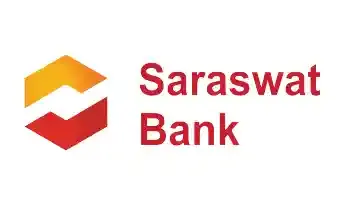Get instant loan offer suitable to your profile !


On this Page:
Learn how remittance fees on education loans impact your study abroad budget. Discover tips to reduce costs and maximize your loan benefits for international education.
When you get an education loan for abroad studies, you must bear a few charges to ensure a smooth transfer of funds. Most people complain that the remittance fee is a hidden charge. The reason behind this allegation is the lack of knowledge. While this is not a hidden charge and having knowledge and understanding about it in the context of an education loan will help you a lot in the loan process. Therefore, we have comprehended everything about the education loan in this blog and provide comprehensive insights on the remittance fee associated with education loans.

The remittance refers to charges by the governments levied on the transfer of money from one country to another. Thus, when an amount from the education loans for abroad is transferred, a remittance fee is applicable. These charges apply to the tuition fees or living expenses transferred from India to your destination country. This fee is imposed on various cross-border transactions, contributing significantly to a country's economy and aiding individuals in lower-income nations. Remittance helps in poverty alleviation, making it an essential element in economic development.
Remittance fees on education loans are imposed by banks or financial institutions from whom you have taken an education loan. The international money transfer depends on the disbursed amount. So, confirm these charges with the respective bank beforehand to ensure transparency and make informed decisions.

Education loan remittance fees are charged to cover the costs that financial institutions pay while transferring funds from one country to another for education purposes. These fees support the operational and administrative costs in ensuring safe and efficient international transfers related to education loans. However, this fee is also used to maintain the infrastructure and services needed for smooth cross-border transactions in the education finance process.
People often confuse the margin money in education loans with the remittance fee. However, margin money is the percentage of the loan amount that is the borrower's contribution. On the other hand, remittance fee is a charge for transferring funds internationally, covering the costs of processing and facilitating cross-border transactions. Therefore, underlying the difference between the two.
The Liberalised Remittance Scheme (LRS) was launched by the Indian government, helping parents to send money to their children. This includes various expenses incurred in a foreign country. A maximum limit of USD 250,000 is set upon such transfers.
Under this scheme, the remittance charge is nil if a parent or any other person transfers an amount below INR 10,00,000. However, if the amount exceeds this threshold, a remittance charge of 0.5% to 1% is charged by the lenders. These remittance charges are applicable only if the money is transferred through a financial institution regulated and licensed by the RBI. However, a TCS of 5% is charged in case of self-funding.
| Amount Transferred | Remittance Fee | Tax Collected at Source (TCS) |
|---|---|---|
|
Up to INR 10 lakhs |
0% |
0% |
|
Above INR 10 lakhs (verified* loan-funded remittance) |
0.5%-1% |
0% |
|
Above INR 10 lakhs (remittance from other sources) |
0% |
5% |
To understand it better, let’s do some calculations. Suppose you have the INR 11 Lakhs of the fund transfer through a financial institution, then you need to pay INR 5,500 as the remittance fee. On the other hand, if your parents are sending the same amount personally, then the TCS of INR 5,000.

Here's a quick comparison of remittance fees charged by some of the leading banks and NBFCs offering education loans:
| Bank/NBFC | Remittance Fee (%) | Flat Fee (INR) | Remarks |
|---|---|---|---|
|
0.50% |
₹500–₹1,000 |
Waived in some education loan schemes |
|
|
0.30%–0.50% |
Varies |
Discounts on Flywire/Remitout |
|
|
0.50% |
₹750–₹1,000 |
Forex margin extra |
|
|
0.50% |
₹1,000 |
May bundle into the loan disbursement |
|
|
0.30%–0.40% |
₹500 |
Among the lowest in public banks |
|
|
0.40%–0.60% |
Varies |
Competitive rates with partners |
|
|
0.50% |
Varies |
Negotiable in large disbursements |

While remittance fees seem minor, they significantly add to the total cost of studying abroad when compounded over multiple transactions across semesters or years. For students relying on education loans, these fees increase the effective repayment burden. Remittance fees are often charged per transaction, based on the percentage (0.3%– 1%) of the remitted amount.
| Scenario | With Remittance Fee (INR) | Without Remittance Fee (INR) |
|---|---|---|
|
Tuition + Living (1 year) |
20,00,000 |
20,00,000 |
|
Remittance Fee @ 0.5% |
10,000 |
0 |
|
Loan Amount Disbursed |
20,10,000 |
20,00,000 |
|
Interest @ 10% (5 years) |
~5,27,000 |
~5,24,000 |
|
Total Repayment |
25,37,000 |
25,24,000 |

As we know, remittance fee is a forex charge on the fund transfer however, TCS is an advance tax collected by the government. Below is a side-by-side comparison between the two.
| Feature | Remittance Fee | TCS (Tax Collected at Source) |
|---|---|---|
|
Nature |
Service Fee |
Government Tax (Advance collection) |
|
Charged By |
Bank/Forex Provider |
Indian Government via Authorized Dealer Bank |
|
Mandatory? |
Yes (for service) |
Yes (based on amount & purpose) |
|
Refundable/Claimable? |
No |
Yes (Claimed as tax credit in ITR) |
|
Amount Based On |
Total remittance amount |
Only for amounts exceeding the threshold |
|
Rate |
0.3% – 0.6% or flat ₹ |
5%, 20% depending on the purpose |
|
Who Bears the Cost? |
The sender (student/parent) |
The sender (claimable later) |

Initially, there was considerable confusion about the expenses included in the remittance fee for education loans. Recently, the Finance Ministry of India clarified that starting from June 30, 2023, the following items will be incorporated in the remittance fee for education loans:




Instead of multiple small transfers, send the tuition and living expenses together. This reduces the number of transactions, hence fewer remittance fees.
Banks like Bank of Baroda, SBI, or private lenders offering partnered remittance platforms often have discounted or waived fees.
Platforms like Wise, Flywire, or Remitout are for students and may offer lower service fees and better exchange rates than traditional banks.
Some banks apply currency conversion markups (1–3%); thus, always ask for the mid-market rate or compare with the Google rate.
For certain universities, if you can pay directly in INR and let the lender or partnered platform handle the forex transfer, you may avoid direct fee exposure and save on conversion costs.
Read Also:





Now that you understand how and why the remittance fee is applied to money transfers between India and abroad. Understanding it will help you plan your loan amount and disbursement of education loan accordingly. Therefore, one of the important factors is that the usage of personal funds will cost you 5%. But, if you go for the education loan, the TCS will become nil, and a mere remittance fee of 0.5% will be charged. This emphasizes significant savings that can be achieved using an education loan. So, navigate the student loan market by simply checking your eligibility through GyanDhan. Once you've done that, relax because we take care of all the other details. Also, ensure that you stay informed about everything and do not keep any hidden charges.

The remittance fee on education loans is charged to cover expenses incurred by banks during the secure transfer of funds for educational purposes across borders.
In case you are sending an amount that is less than 10 Lakh per financial year, then you do not need to pay any remittance fee on it.
For an education loan, the bank disburses the amount directly, and then it pays the fee. However, the amount will either be added to the principal amount, or you will be required to make an advance payment before disbursement.
Under LRS, if a parent sends an amount below 10 Lakh INR, there is no remittance fee. However, amounts exceeding this threshold may incur a 0.5% to 1% fee if transferred through an RBI-regulated institute or a 5% fee if sourced from personal funds.
The clarified remittance fee, effective from June 30, 2023, encompasses airplane tickets, tuition fees, and daily living expenses associated with studying abroad, such as food, accommodation, transportation, and health services.
Check Your Education Loan Eligibility

Ask from a community of 10K+ peers, alumni and experts
Trending Blogs
Similar Blogs

Network with a community of curious students, just like you
Join our community to make connections, find answers and future roommates.. Join our CommunityCountry-Wise Loans
Best Lenders for Education Loan

ICICI Bank

Axis Bank

Union Bank

Prodigy

Auxilo

Credila

IDFC

InCred

MPower

Avanse

SBI

BOB

Poonawalla

Saraswat